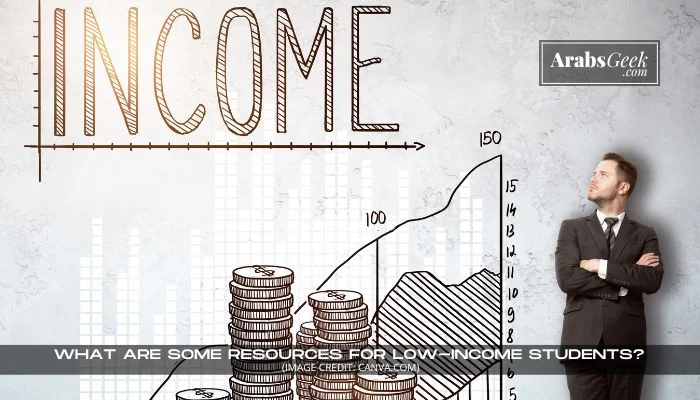What Are Some Resources For Low-Income Students? In the pursuit of education, students from low-income backgrounds often face an uphill battle, navigating a terrain marked by financial constraints and limited access to resources. Yet, within this challenge lies a beacon of hope – a plethora of resources specifically designed to support and uplift low-income students. These resources are not just about providing financial assistance; they are about bridging gaps, fostering equal opportunities, and empowering students to reach their full academic potential.
From scholarships and grants that ease the burden of tuition to support programs that offer academic guidance, mentorship, and essential supplies, the range of available assistance is both diverse and impactful. This journey to uncover the resources for low-income students is more than a quest for aid; it’s about unlocking doors to a world where financial limitations do not dictate educational outcomes.
As we explore these vital supports, we’re not just navigating funding options; we’re weaving a tapestry of opportunity, support, and empowerment, enabling students to transcend barriers and soar to new academic heights. Let’s embark on this enlightening path, shedding light on the resources that can turn aspirations into achievements for low-income students.
Table of Contents
Financial Aid and Scholarships | What Are Some Resources For Low-Income Students?
- Federal Pell Grants: Pell Grants are need-based grants provided by the federal government to undergraduate students who display exceptional financial need.
- State Grants: Many states offer grants and scholarships to residents based on need. These can significantly reduce the cost of education for low-income students.
- Institutional Scholarships: Colleges and universities often have scholarship funds available specifically for students with financial need.
- Private Scholarships: Numerous organizations, foundations, and corporations offer scholarships based on various criteria, including financial need, academic achievement, community service, or specific areas of study.
Educational Programs and Support | What Are Some Resources For Low-Income Students?
- TRIO Programs: Federally funded programs like Upward Bound and Student Support Services provide low-income students with academic advising, tutoring, and college application assistance.
- Educational Opportunity Centers: These centers provide counseling and information on college admissions and financial aid to adults who want to enter or continue a postsecondary education.
- GEAR UP (Gaining Early Awareness and Readiness for Undergraduate Programs): This program provides support services to high-need middle and high schools to prepare students for college.
- Unlock Exclusive Financial Insights! Click Over to EntrepreneursPilot.com Now!
- Unlock a Treasure Trove of Must-Read Finance Articles! Click Here to Dive into Our Homepage’s Wealth of Knowledge!
- Unlock Exclusive Business Opportunities! 🚀 Connect with Us Now at [email protected]!
Textbook and Learning Material Assistance
- Textbook Lending Libraries: Some schools and non-profits operate lending libraries where students can borrow textbooks for free or a nominal fee.
- Open Educational Resources (OERs): OERs are free learning materials available online, including textbooks, lecture notes, and exams.
Technology and Internet Access | What Are Some Resources For Low-Income Students?
- Discounted or Free Laptops: Various organizations and programs offer free or discounted laptops or tablets to low-income students.
- Subsidized Internet Services: Programs like the Lifeline Program provide reduced-cost or free internet services to eligible low-income households.
Food and Basic Necessities | What Are Some Resources For Low-Income Students?
- On-Campus Food Pantries: Many colleges have food pantries that provide free food to students in need.
- Supplemental Nutrition Assistance Program (SNAP): College students meeting specific criteria may be eligible for SNAP benefits, which can help cover food expenses.
Housing and Living Expenses | What Are Some Resources For Low-Income Students?
- On-Campus Housing Grants: Some colleges offer grants or special housing options for low-income students to help reduce living expenses.
- Emergency Housing Assistance: Various colleges and non-profits provide emergency housing assistance or temporary shelters for students facing housing insecurity.
Work-Study Programs | What Are Some Resources For Low-Income Students?
- Federal Work-Study Program: This program provides part-time employment for undergraduate and graduate students with financial need, allowing them to earn money to help pay education expenses.
Counseling and Mentorship
- Academic Advising and Counseling Services: Many schools offer free counseling and advising services to help low-income students navigate academic and personal challenges.
- Mentorship Programs: Programs like Big Brothers Big Sisters and local community mentorship initiatives can provide valuable guidance and support.
Legal Aid and Advocacy
- Student Legal Services: Some universities offer legal aid to students, providing advice and assistance on issues like housing, employment, and consumer protection.
Healthcare | What Are Some Resources For Low-Income Students?
- Student Health Centers: Many colleges provide low-cost healthcare services through on-campus health centers.
- Medicaid: Low-income students may qualify for Medicaid, providing comprehensive healthcare coverage.
Conclusion | What Are Some Resources For Low-Income Students?
The range of resources available for low-income students is vast and varied, addressing not just financial needs but also academic, technological, and personal challenges. By leveraging these supports, low-income students can overcome barriers, fully engage in their academic journey, and lay a strong foundation for their future.
FAQ Section
Q1: Can low-income students get help with transportation costs?
A: Yes, some schools and organizations offer transportation passes or subsidies to help students with commuting costs.
Q2: Are there resources for low-income students with disabilities?
A: Absolutely. In addition to the resources mentioned, students with disabilities can access specialized services and accommodations through their school’s disability services office.
Q3: How can low-income students find out about these resources?
A: Start by checking with your school’s financial aid office, counseling center, or student services. Additionally, researching online and connecting with local community organizations can uncover more options.
Q4: Is there support for low-income students during summer or breaks?
A: Some programs and schools offer summer grants, internships, or housing assistance to support students when classes are not in session.











